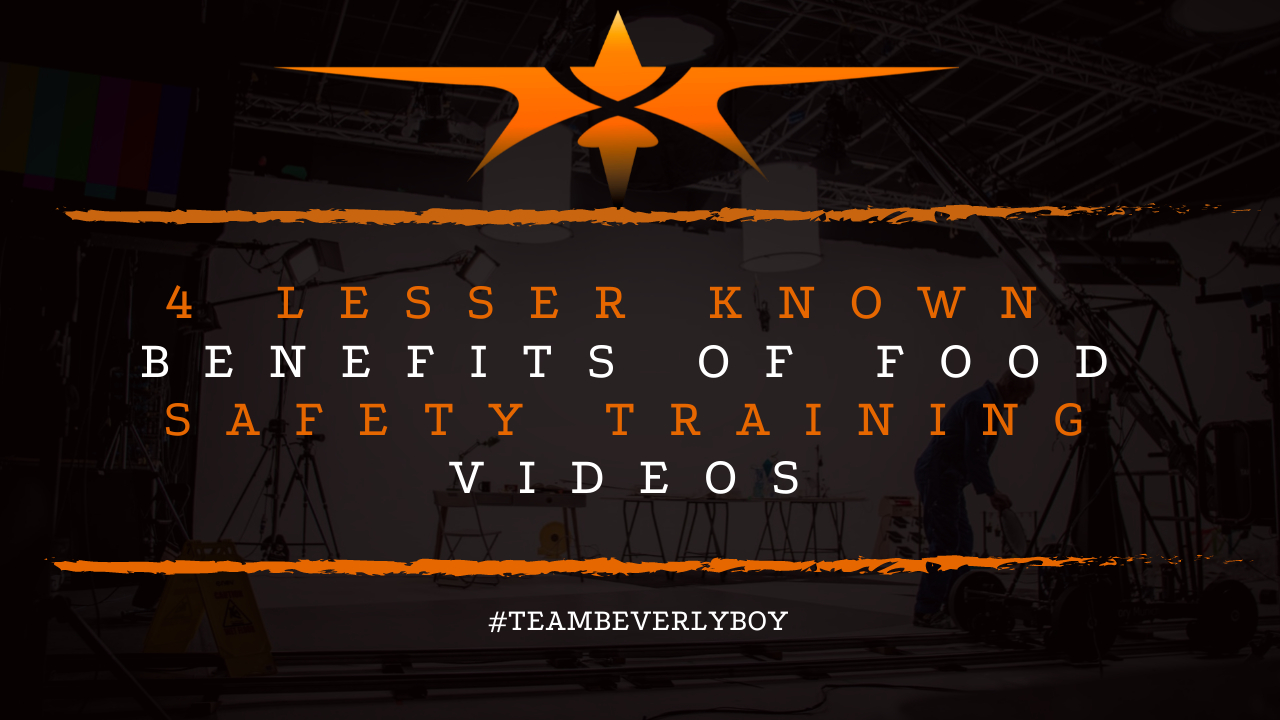
4 Lesser Known Benefits of Food Safety Training Videos
Although traditional training methods including the use of textbooks, manuals and in-person seminars are still frequently used throughout restaurants and the food and beverage industry, video is more effective and efficient, especially for food safety training. Videos have the power to provide several key benefits that traditional training methods simply can’t offer, including stronger monitoring, ease of access, improved understanding, and greater worker retention of information.
As a restaurant owner or food and beverage industry organization, you might not immediately think of these lesser known benefits of food safety training videos, but they’re definitely important! In fact, we believe digital video training programs certainly have their place in the industry and that the use of video for food safety training is more valuable than you might realize in regards to building an equipped, well-trained workforce.

-
Food Safety Training Videos Eliminate Risk of Foodborne Illness
When it comes to providing food safety training, you might not consider the potential for illness or the spread of foodborne pathogens, but mistakes can and will be made and when they do, risks arise. The use of food safety training videos will eliminate any risk of foodborne illness occurring as a result of training. Where traditional in-person training programs place the worker in direct contact with foods and beverages that may contain foodborne pathogens which can cause illness, video eliminates the use of actual food without reducing the total amount of knowledge and understanding that can be provided.
-
Food Safety Training Videos Improve Worker Understanding of Complex Topics
Where the use of a manual, or quickly provided one-on-one session on complex topics relative to food safety can result in workers struggling to follow along or to fully grasp the concepts being taught, video eliminates this problem almost completely. With audio visual delivery of complex topics on food safety, workers are more likely to fully understand the concepts being taught.
In fact, food safety training videos demonstrate complex processes, procedures, and details to workers making it easy to follow along regardless of the topic complexity. And since training videos are generally broken down into very basic topical coverage, workers can digest bitesized learning experiences that they’ll be more likely to fully comprehend. We call this microlearning and it basically means that a worker can learn a key concept in about 5 minutes.

-
Food Safety Training Videos are Easily Accessed
Did you know that 19% of U.S. adults do not read above a “below average” level? In other words, many U.S. food service workers may struggle to read a training manual if you were to provide it to them. Of those who can read, about 39% have a “below average” reading level in addition to the 19% that have not met that level. Additionally, when a worker reads, they retain about 20% of what they read.
So if you provide a worker with a training manual that you expect them to read, first you’ve got to hope that the read it all and then you have to hope they retain more than 20%. It’s a huge risk, particularly when it comes to assuming that workers have knowledge on food safety which, should they not have the training you think they have, could result in others getting sick or worse.
Fortunately, food safety training videos make training accessible. Workers with below average reading abilities won’t suffer when training is provided by video. In fact, workers of all learning styles can appreciate the value of training videos because audio visual training meets a wide range of learner needs.
-
Food Safety Training Videos Are Easily Measured for Stronger Monitoring of Workers

Remember what we mentioned about not knowing IF a worker has actually read a training manual or not? With traditional training programs it can be particularly difficult to determine whether a worker has actually trained or not unless you have them train in-person. However, food safety training videos eliminate this struggle.
Management can quickly and easily see what workers have engaged in their food safety training videos and who might need to keep training. They can see where an employee left off in a training video or how they engaged with interactive training content. They can even see if an employee struggled with a particular training module or series and requires additional one-on-one intervention to ensure they’ve got the appropriate food safety skills required for safe operations inside a kitchen or similar establishment.
It’s not hard to distinguish the value of food safety training videos when you compare them to traditional training manuals or textbooks. Training videos provide essential skills coverage that is necessary for your employees to operate effectively, efficiently and most important, safely!
At Beverly Boy Productions, we believe these are some of the most important and lesser considered benefits of food safety training videos, but they’re certainly not the only important factors to consider producing food safety training videos for your organization. To learn more about keeping your workers safe, and to start the production of a top quality training program, give Beverly Boy Productions a call!


